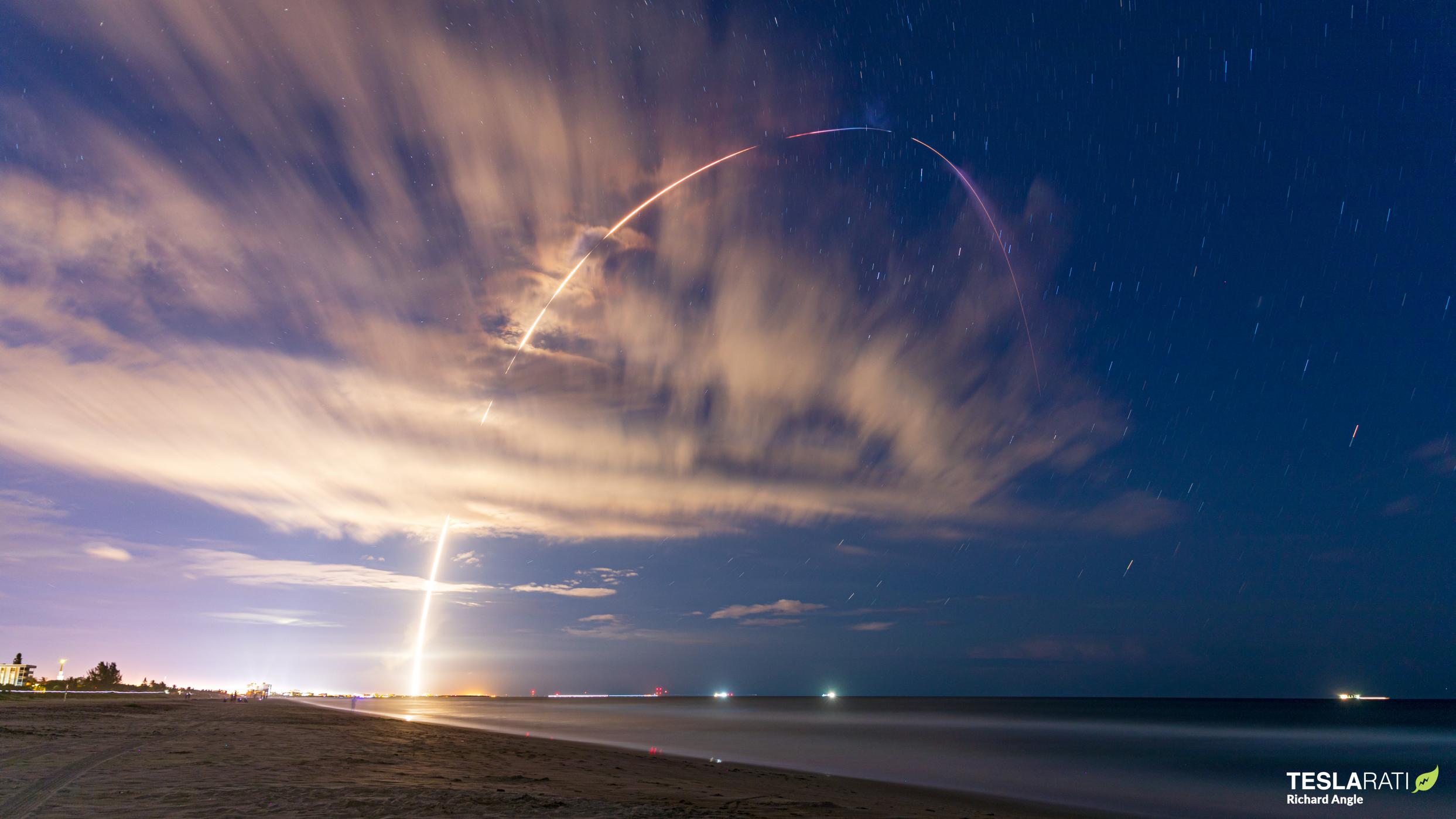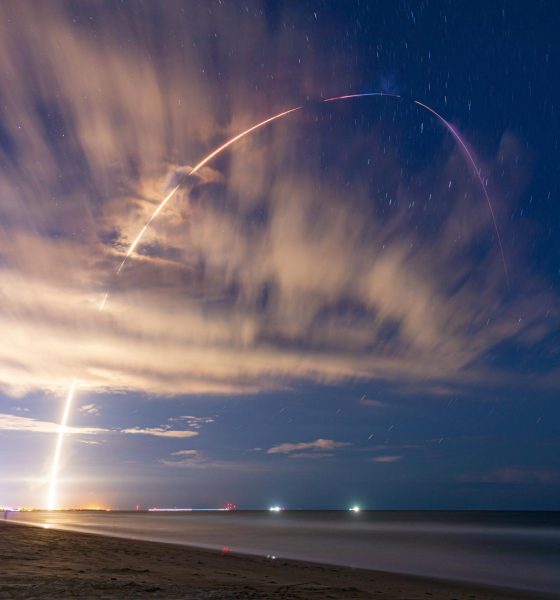SpaceX has completed its 60th operational Starlink satellite launch after a rare string of scrubs.
Flying for the 6th time just 66 days after its 5th launch, Falcon 9 booster B1067 lifted off with 54 Starlink satellites on SpaceX’s Starlink 4-34 mission at 8:18 pm EDT, Sunday, September 18th. Five days prior, after unknown issues triggered a delay from a planned September 11th launch attempt, SpaceX attempted to launch the mission for the first time on September 13th.
About an hour before liftoff, lightning conditions forced the company to call off the attempt. On September 14th, also about an hour before liftoff, weather forced SpaceX to call off the second attempt. On September 15th, the third attempt was aborted (by weather) just 29 seconds before liftoff, followed by a fourth weather-related scrub about a minute before liftoff on September 16th. Only after a fifth attempt on September 17th was preempted by a delay to September 18th did SpaceX finally find a gap between Florida’s summer weather.
With dozens of Starlink launches beginning to blur together and SpaceX’s Falcon 9 continuing a relentless and potentially record-breaking streak of successes at a pace that could soon make it the fastest launching rocket in history, it’s hard to be surprised that Starlink 4-34 was completed without issue. Falcon 9 B1067 ascended under power for about three minutes, sent the rest of the rocket on the way to orbit, coasted into space, and returned to Earth with SpaceX’s 68th consecutively successful booster landing.
Falcon 9’s underappreciated upper stage continued into an orbit around 300 kilometers (~190 mi) up, spun itself up end over end, and deployed a 16.7-ton (~36,900 lb) stack of 54 Starlink V1.5 satellites all at once. Following the quick deployment, the rocket’s pair of reusable fairing halves were likely still 10 or 20 minutes away from touching down on the Atlantic Ocean under their GPS-guided parafoils, where they will eventually be scooped out of the water for future flights.
Starlink 4-34 was SpaceX’s 42nd launch of 2022, maintaining an average of one launch every 6.2 days since the year began. It leaves more than 3000 working Starlink satellites in Earth orbit, likely meaning that a majority of all working satellites are owned and operated by SpaceX less than three full years after the company began operational launches.
Up next, Next Spaceflight and Spaceflight Now report that SpaceX has two more Starlink launches (4-35 and 4-36) tentatively scheduled before the end of September. As of September 15th, both reported that those missions were working towards launches on September 19th and September 26th – nothing unusual for SpaceX in 2022.
What was unusual, however, was both unofficial manifests’ agreement that SpaceX intended to use the same pad – Cape Canaveral Space Force Station’s LC-40 – to launch Starlink 4-34, 4-35, and 4-36. Even assuming that those schedules were predicated upon Starlink 4-34 launching on September 13th, before all of its weather delays, SpaceX would have had to break LC-40’s 7.7-day turnaround record by around ~25% and complete a second launch just seven days after that.
Starlink 4-34’s delays have thrown that plan into question, but the fact that SpaceX thought it was possible in the first place suggests that the company has plans to squeeze even more performance out of LC-40 – already its most important pad from the perspective of launch cadence. Launch photographer Ben Cooper now reports that Starlink 4-36 could launch in late September or October. If it slips into October, SpaceX has a rapid-fire pair of customer satellite launches scheduled on October 5th and 13th that will probably take precedent over any internal Starlink mission.
With only 16 days left before LC-40’s next commercial launch and NASA’s Crew-5 launch taking over SpaceX’s other East Coast pad until October 3rd, SpaceX would have to launch Starlink 4-35 and 4-36 just four or five days apart (and one just 4-5 days after Starlink 4-34) to avoid delaying one of the Starlink missions well into October, avoid unnecessarily delaying commercial launches for paying customers, and ensure that those customers don’t have abruptly agree to be commercial guinea pigs for extra quick LC-40 turnarounds.
Starlink 4-35 is now tentatively scheduled for September 23rd, making a Starlink 4-36 delay more likely but not fully ruling out a launch attempt before the end of the month.

News
Tesla dominates in the UK with Model Y and Model 3 leading the way
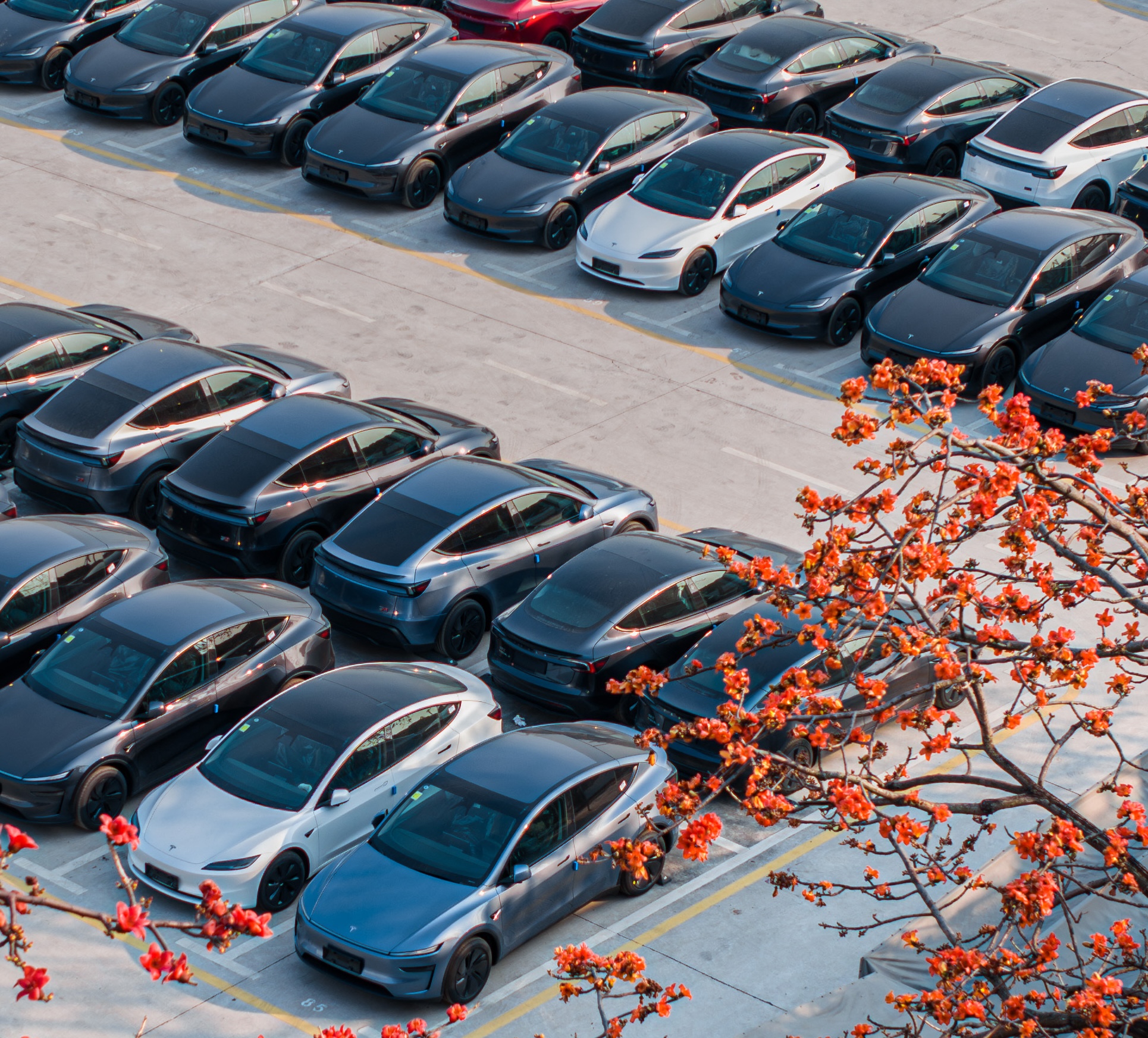
Tesla is dominating in the United Kingdom so far through 2025, and with about two weeks left in the year, the Model Y and Model 3 are leading the way.
The Model Y and Model 3 are the two best-selling electric vehicles in the United Kingdom, which is comprised of England, Scotland, Wales, and Northern Ireland, and it’s not particularly close.
According to data gathered by EU-EVs, the Model Y is sitting at 18,890 units for the year, while the Model 3 is slightly behind with 16,361 sales for the year so far.
The next best-selling EV is the Audi Q4 e-tron at 10,287 units, lagging significantly behind but ahead of other models like the BMW i4 and the Audi Q6 e-tron.
GOOD NEWS 🇬🇧 Tesla is absolutely crushing the UK electric vehicle market in 2025 💥
The numbers are in, and the dominance is clear. With an impressive amount of 42,270 vehicles delivered year-to-date, the brand now commands a solid 9.6% market share of the total auto market 🆒… pic.twitter.com/dkiGX9kzd0
— Ming (@tslaming) December 18, 2025
The Model Y has tasted significant success in the global market, but it has dominated in large markets like Europe and the United States.
For years, it’s been a car that has fit the bill of exactly what consumers need: a perfect combination of luxury, space, and sustainability.
Both vehicles are going to see decreases in sales compared to 2024; the Model Y was the best-selling car last year, but it sold 32,610 units in the UK. Meanwhile, the Model 3 had reached 17,272 units, which will keep it right on par with last year.
Tesla sold 50,090 units in the market last year, and it’s about 8,000 units shy of last year’s pace. It also had a stronger market share last year with 13.2 percent of the sales in the market. With two weeks left in 2025, Tesla has a 9.6 percent market share, leading Volkswagen with 8 percent.
The company likely felt some impact from CEO Elon Musk’s involvement with the Trump administration and, more specifically, his role with DOGE. However, it is worth mentioning that some months saw stronger consumer demand than others. For example, sales were up over 20 percent in February. A 14 percent increase followed this in June.
News
Tesla Insurance officially expands to new U.S. state
Tesla’s in-house Insurance program first launched back in late 2019, offering a new way to insure the vehicles that was potentially less expensive and could alleviate a lot of the issues people had with claims, as the company could assess and repair the damage itself.
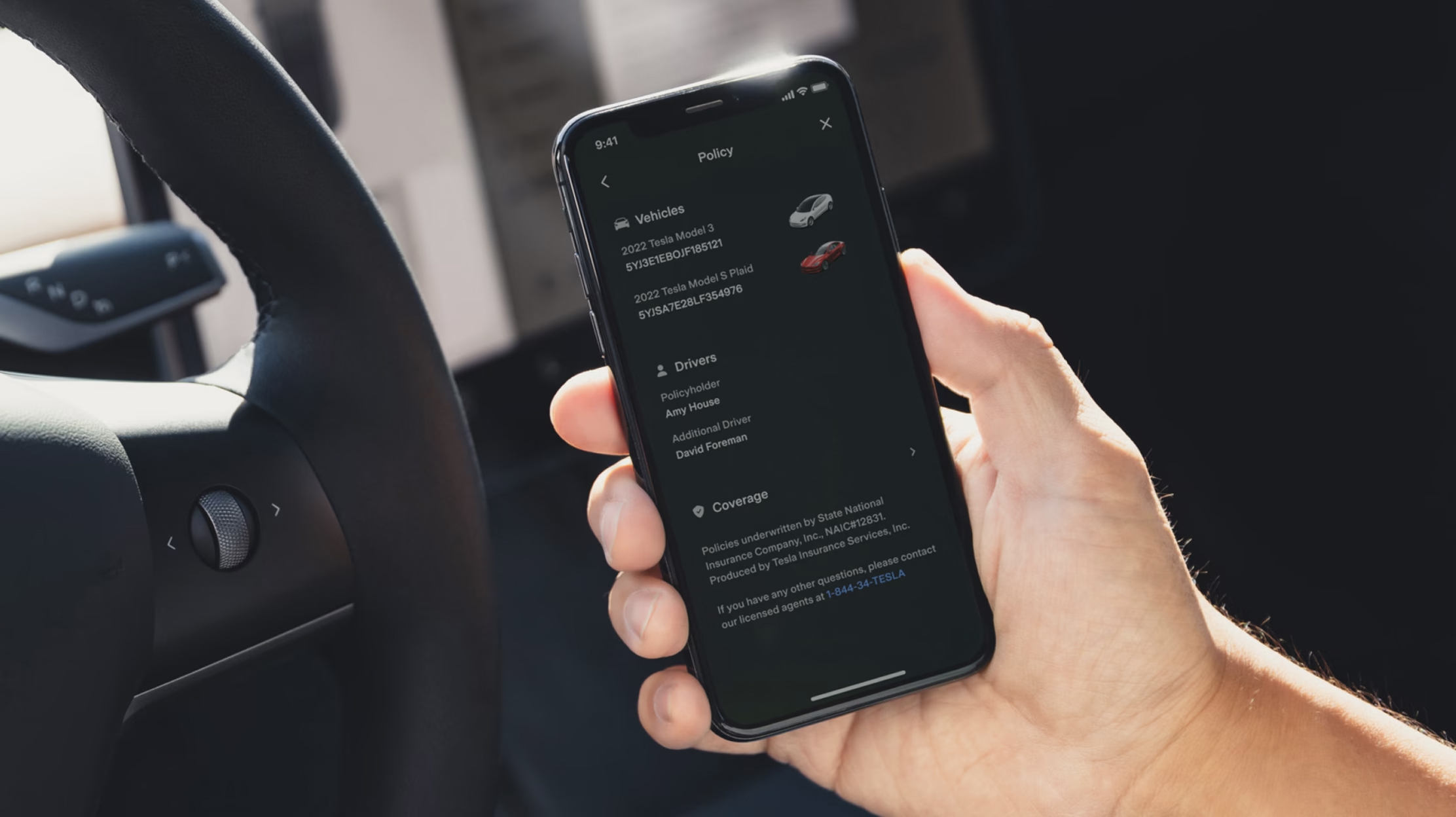
Tesla Insurance has officially expanded to a new U.S. state, its thirteenth since its launch in 2019.
Tesla has confirmed that its in-house Insurance program has officially made its way to Florida, just two months after the company filed to update its Private Passenger Auto program in the state. It had tried to offer its insurance program to drivers in the state back in 2022, but its launch did not happen.
Instead, Tesla refiled the paperwork back in mid-October, which essentially was the move toward initiating the offering this month.
BREAKING: Tesla Insurance has just officially launched in Florida.
This is the first new state to receive @Tesla Insurance in more than 3 years. In total, Tesla insurance is now available in 13 U.S. states (map in thread below of all the states).
Tesla Insurance in Florida uses… pic.twitter.com/bDwh1IV6gD
— Sawyer Merritt (@SawyerMerritt) December 17, 2025
Tesla’s in-house Insurance program first launched back in late 2019, offering a new way to insure the vehicles that was potentially less expensive and could alleviate a lot of the issues people had with claims, as the company could assess and repair the damage itself.
It has expanded to new states since 2019, but Florida presents a particularly interesting challenge for Tesla, as the company’s entry into the state is particularly noteworthy given its unique insurance landscape, characterized by high premiums due to frequent natural disasters, dense traffic, and a no-fault system.
Annual average premiums for Florida drivers hover around $4,000 per year, well above the national average. Tesla’s insurance program could disrupt this, especially for EV enthusiasts. The state’s growing EV adoption, fueled by incentives and infrastructure development, aligns perfectly with Tesla’s ecosystem.
Moreover, there are more ways to have cars repaired, and features like comprehensive coverage for battery damage and roadside assistance tailored to EVs address those common painpoints that owners have.
However, there are some challenges that still remain. Florida’s susceptibility to hurricanes raises questions about how Tesla will handle claims during disasters.
Looking ahead, Tesla’s expansion of its insurance program signals the company’s ambition to continue vertically integrating its services, including coverage of its vehicles. Reducing dependency on third-party insurers only makes things simpler for the company’s automotive division, as well as for its customers.
News
Tesla Full Self-Driving gets sparkling review from South Korean politician
“Having already ridden in an unmanned robotaxi, the novelty wasn’t as strong for me, but it drives just as well as most people do. It already feels like a completed technology, which gives me a lot to think about.”
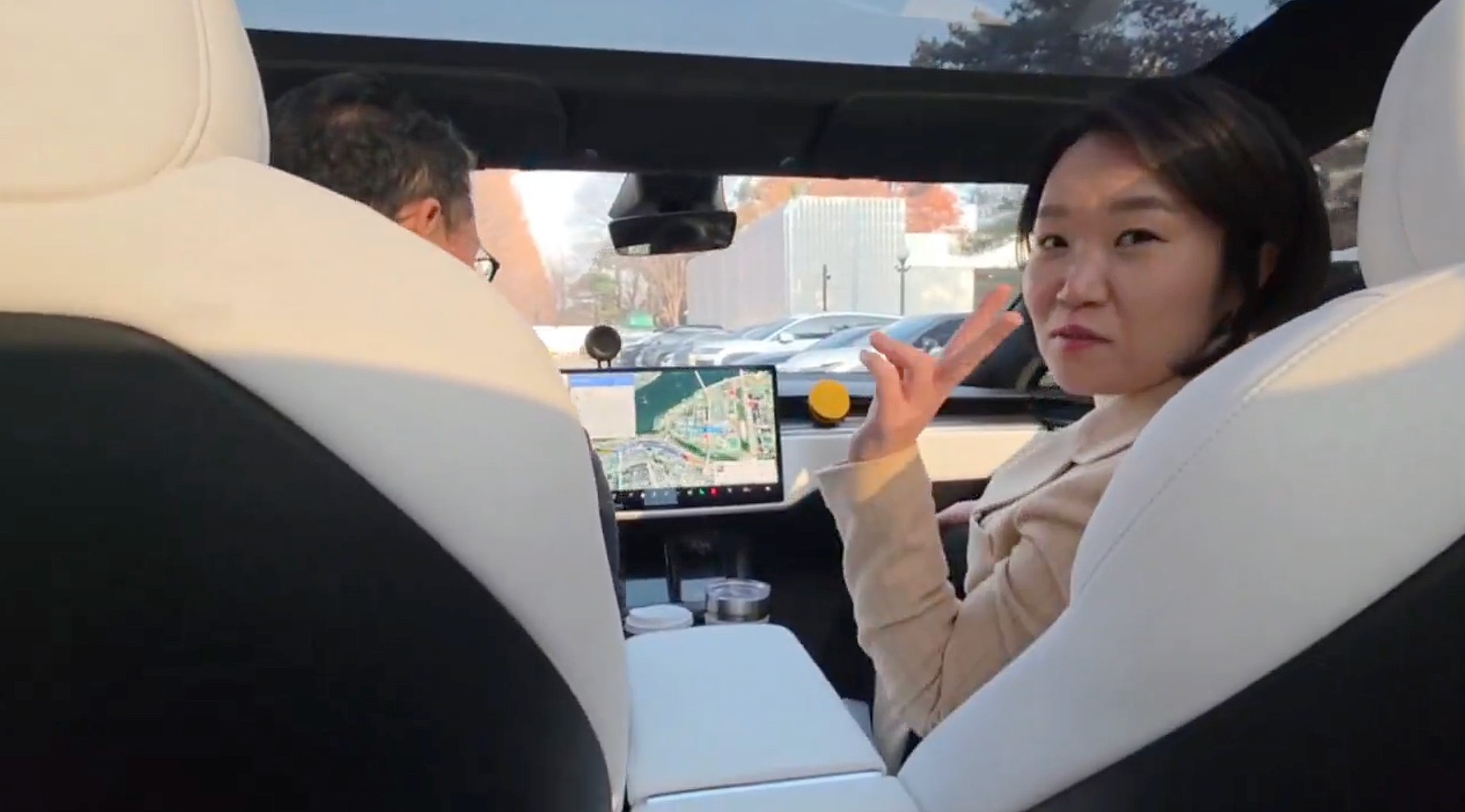
Tesla Full Self-Driving got its first sparkling review from South Korean politician Lee So-young, a member of the country’s National Assembly, earlier this week.
Lee is a member of the Strategy and Finance Committee in South Korea and is a proponent of sustainable technologies and their applications in both residential and commercial settings. For the first time, Lee was able to utilize Tesla’s Full Self-Driving technology as it launched in the country in late November.
Her thoughts on the suite were complimentary to the suite, stating that “it drives just as well as most people do,” and that “it already feels like a completed technology.”
드디어 오늘, 서울에서 테슬라 FSD 체험 했습니다.
JiDal Papa님의 모델S 협찬에 힘입어^^ 파파님 정말 감사합니다.
국회 -> 망원시장 -> 홍익대 -> 국회 복귀 코스였고요.
이미 무인 로보택시를 타봐서 그런지 신기함은
덜했지만, 웬만한 사람만큼 운전을 잘하네요.이미 완성된 기술이라고… pic.twitter.com/8pAidHBpRG
— 이소영 국회의원 (Soyoung Lee) (@im_soyounglee) December 17, 2025
Her translated post says:
“Finally, today I got to experience Tesla FSD in Seoul. Thanks to the Model S sponsored by JiDal Papa^^, I’m truly grateful to Papa. The route was from the National Assembly -> Mangwon Market -> Hongik University -> back to the National Assembly. Having already ridden in an unmanned robotaxi, the novelty wasn’t as strong for me, but it drives just as well as most people do. It already feels like a completed technology, which gives me a lot to think about. Once it actually spreads into widespread use, I feel like our daily lives are going to change a lot. Even I, with my license gathering dust in a drawer, don’t see much reason to learn to drive a manual anymore.”
Tesla Full Self-Driving officially landed in South Korea in late November, with the initial launch being one of Tesla’s most recent, v14.1.4.
It marked the seventh country in which Tesla was able to enable the driver assistance suite, following the United States, Puerto Rico, Canada, China, Mexico, Australia, and New Zealand.
It is important to see politicians and figures in power try new technologies, especially ones that are widely popular in other regions of the world and could potentially revolutionize how people travel globally.
